I wrote a blog about it in the past but I am still in the process of perfecting the method that works for me.
I set a low budget of $375 a month for my groceries for my family that includes my husband, myself, and our 3 young children age 3 to 8. One grandparent also lives in our house. So I feed a household of 6 with $375 a month.
$375 includes $80 for fruit, $95 for meat, and $200 for food and nonfood items like toilet papers, kids’ clothes, and cleaning supplies.
Few years ago, I used to shop weekly sales and plan meals around what was on sale for the week. I was on a smaller budget of $30 a week for food, fruit, and meat for a family of 4 at the time.
In 2014, I started to stock up on meat when on sale. I purchased a small chest freezer and stocked up on whole pork and lamb meat purchased from farmers. I didn’t have enough control over my budget at that point and usually went over budget.
Since 2016, I changed my strategy and decided to stock up on groceries as well. My husband and I decided to set the current budget. With my current food budget, I started to purchase few extra of food staples during grocery shopping. I set envelops for each category (meat, fruit, food). At the end of the month, if a category has money left, I keep it on a separate envelop for that category and withdraw $375 again split between meat, fruit and food for the following month.
When meat goes on sale which is not every week, I stock up to the extent of what I have saved in the meat envelop. I stop purchasing meat from farmers as it pushes me over my meat budget. But I still purchase beef, eggs, and chickens at great deals from my in-laws. At the moment, they have a milk cow they want to get rid of because she injured her leg this winter and asked us if we would like to have it. We would pay for the butcher fee only. The butcher would make ground beef with it. We decided to go for that. Despite me canning meat, I decided to purchase a third freezer (medium size) in fall 2018 for meat as I couldn’t keep up with my canning. Also I prefer to freeze my meat than canning it. Canning meat speeds up the cooking process but I come to like my canning meat in soups. I enjoy canning my bone broth though and continue on that. I like canning fruit as well. I canned potato and greens in the past but I prefer to keep my greens frozen. So I dedicated my first chest freezer (5 cu ft) to vegetables that come from my garden or purchased. I would canne potatoes if necessary other than that they keep well in my basement.
Meat:
Every month, I keep $95 in an envelope for meat which adds up when meat is not on sale. I shop my meat freezer for dinners.
When meat goes on sale and I came to know the price I would make a purchase unless my freezer has a low supply, like $0.49 for chicken quarters, or $0.99/lb for pork shoulder roast I stock up. For instance, early March, pork roast was on sale for $0.99/lb at a grocery store I generally don’t shop anymore because despite its excellent products and service it is expensive unless something is on sale. I don’t buy things just because they are on sale. It has to be in the list of my staples. I have $45 left in meat envelop and spent it on the roast. The roast was about 10 lbs each bag and purchased about 5 bags. I only have $50 on meat this month because in fall 2018, my in-laws butchered cows and we purchased from them more meat that we have enough saved up for in the meat envelop. But because it was a good deal, we pulled some money from our saving for the purchase. The following winter months until early this march, the meat budget paid back the amount withdrawn from the saving account. We will continue to set aside the $95 every month, until we received the ground beef. Last summer and fall we received from my in-laws, over 20 chickens ($5-$7 /each), 100 lbs. of ground beef($1/ lb.), 100 lbs. of beef steak, roast, minute steak, sirloin steak, T bone, soup bone, stew meat($2/ lb.). I also received the tail, tongue, and heart. The organs are edible and I like to get them as well even though they have a strong taste. I like to utilize all parts of the animal if possible. As you can see the cost totaled to about $440. In addition to that, I purchased meat from the grocery store when on sale including $0.49 chicken quarters which I canned many bags of. I also purchased pork chops on sale at $1.70/lb. I like chops and steaks as they don’t take long to cook. I sear on the stove and put in the oven to cook through while I cook dinner. Roast on the other hand, I bake on low like 250 degrees F overnight for the next dinner. It requires some planning at head of time. I bake my chicken at 350 degrees F for about 1.5 hrs. and I like to do that after dinner for the next day dinner.
In order to stock up on these meats last year which couldn’t fit in my second chest freezer, I made a decision to purchase a third middle chest freezer. By the end of fall the third chest freezer was full of meat (chicken, pork, and beef). My smallest freezer was full of vegetables, and my second freezer full of a mixture of both vegetables and meat. Now as we are at the end of March 2019, my third chest freezer in two third empty. My 1st freezer is half empty. My second freezer doesn’t have any meat or vegetables anymore, and is two third full of sales items like cheese, butter, bread…
Food:
With $200 a month, I have to be creative to fit everything that budget covers. At first it was supposed to be food only. Later I decided to include nonfood items and clothes for kids.
I grow some vegetables in the garden, and the food budget covers that expense as well. Below is my record of the amount of money I have spent on my garden since 2014.
Every year I thrive to spend less on the garden otherwise, I don’t see the point of saving by growing our own food. I came to the conclusion that perennial vegetables would be the way for me to achieve that goal. They are low maintenance and come back every year. I continue to introduce new vegetables to the garden. Last year, many annuals failed big time in my garden to the exception of Kentucky wonder green bean that I sowed from my own seed harvested in 2017. My small chest freezer was full of green beans.
I shared with coworkers and neighbors but they were so much that my middle freezer has not been able to stock up meat.
It was one of the reason we purchased the third freezer.
In 2017, I canned green beans but I didn’t like the taste of it. And I didn’t know if I would have an abundance of it in 2019 growing season so I didn’t want to waste the beans.
Some stayed too long in the fridge and started to go bad and I have to mulch the garden with it to return some nutrients back to the soil. During winter, a day a week we have a dinner of steamed green beans, chops, and gravy on top, biscuits or corn bread. Now in March I am almost out of my green beans.
I have a list of staples I used in cooking. I cook from scratch. I set up a spreadsheet after comparing prices between Sam’s, Walmart and Aldi. What I buy at Walmart, I tend to purchase them at the end of the year when my husband has holiday discount from his employer. I have not reached the goal where I could purchase all the staples in November. What I don’t purchase, I purchase throughout the year while saving money from the food budget for the next December. It is not easy to save for that haul while buying for our current need in the same budget. It would take some years to reach that goal but in the mean time I only purchase in November and December with what I saved up for. At Sam’s Club my staples don’t go sale. So I buy throughout the year buying extra each time. That includes, 25 lbs. bag of rice, 12 lbs. to 50lbs bag of pinto beans, 2 gal white vinegar, and 50 lbs. bag of popcorn.
I set up a spreadsheet with the price of each item. I have column for every month quantity and price of items purchased. I have a column that totals all the months’ quantities and cost. I have a column where I fill up at the end of the year with the quantity of each staples I have on have. Another column calculates the difference between the quantity purchased for the whole year and the quantity in inventory to determine the quantity used for each staple. From that point I know how much of each staple I need to stock up on for one year food supply and how much I need to save to purchase it. That same spreadsheet is set on Google drive and served as grocery list every month when my husband shops. Yes he does our shopping. I record the receipts to evaluate how much we spend and analyze the trend.
Below is my list for Sam’s Club.
My staples from Walmart don’t go on sale either so it saves me money by buying them with my husband holidays discount. That discount increases my purchasing power allowing me to include nonfood items into the food budget. My staples from Walmart includes: unrefined organic coconut oil and extra virgin olive oil which I use to make lye soap. Borax, baking soda, and white vinegar are used as laundry detergent, and to clean the bathroom. Below is Walmart’s grocery list.
Every month I put $20 on the side for milk, bread, and French steak rolls. We buy the rolls on sale for sandwich dinners.
You can see above that I have some staples in my pantry. This allows me to spend less than $200 a month and save the remaining budget for sales and December haul.
Every week, we received grocery stores ads. We review them for sales and make purchases of items on our grocery list. For instance, if avocado is on sale for 2 for $1 or 3 for $1, I would purchase some for a meal that week. I only purchase avocado when on sale.
Potato is one item I like to buy on sale for no more than $0.99 a bag of 5lbs. I would purchase many bags and put the potatoes in boxes and store in the basement where they can last for weeks.
Below is how much I saved in 2018 by purchasing food on sale:
As you can see, some months I spend more than others. My numbers are off a little. Sometimes, I forgot to record some receipts under a category.
Recording our receipts allowed me to analyze our expenses. It doesn’t dictate how much we spend every month. Our cash in envelops does. But recording the receipts allowed me to see how much I save on groceries and what store gives me most savings and what category.
In 2019, I have saved on groceries already. Below is my 2019 Food Budget spreadsheet. I have not recorded February and March receipts yet. I store receipts in an envelope until I record them and toss.
Some receipts have not been entered in the category of stores which makes the amount under food category different from store category.
The food budget also purchased kids toys earlier this year when they were on clearance. I don’t purchase toys for my kids anymore. The last time we purchased toys a lot, was 8 years ago when my oldest one was born. All three kids use the same toys to play. This time I purchased toys and Legos age appropriate for our oldest child. But she still plays with her infant toys with her siblings. I still need to downsize more their old toys.
Fruit:
We buy fruit on sale. We stock up on that too.
On the food budget sheet above, fruit is where we saved the most in 2018. Early March, we purchase pear on sale for $0.99/lb organic and conventional one. When fruit is not on sale we save the fruit budget and eat the fruit on hand.
I have canned pears harvested on my in-laws farm in fall and apples purchased on sale in fall.
We eat those when we don’t have fruit or purchase banana. My kids eat a lot of fruit for snack so we make sure we have fruit on hand and stock up when a typical fruit we eat is on sale.
In 2018, I saved $631 in fruit While I spent $607 on fruit.
In 2019, as of January, I saved $28 and spent $28 on fruit. We purchase fruit at half the price in average.
Recordkeeping
Recording the dates of some sales gives me an idea when these sales would occur again in the future and be prepared for it. The table below showed my note on some sales.
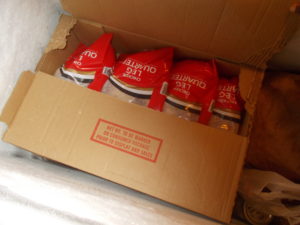
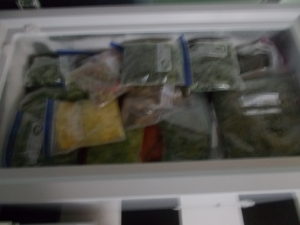
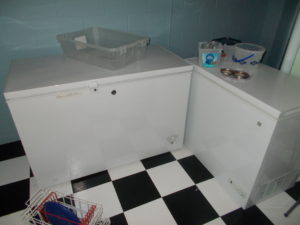
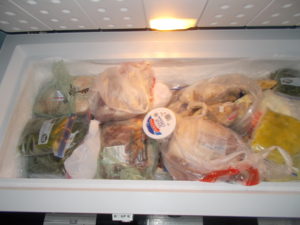
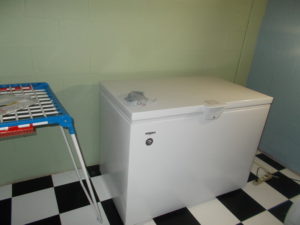
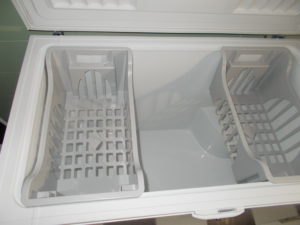
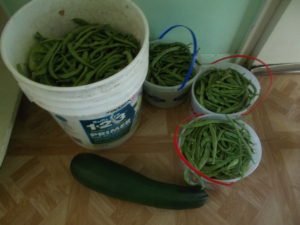

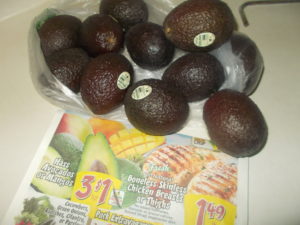
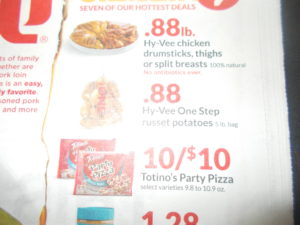
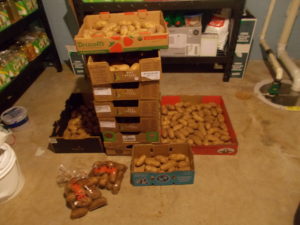
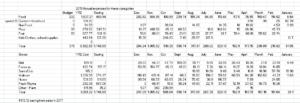
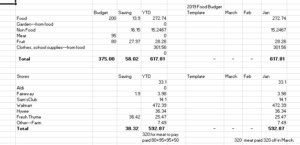

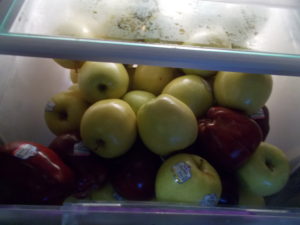
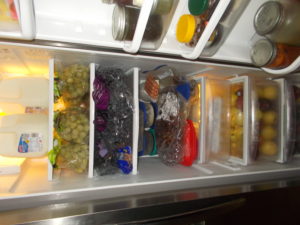
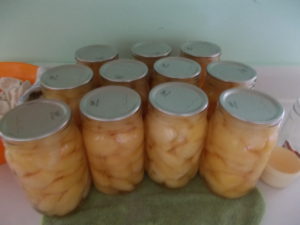
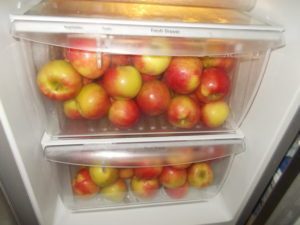




Leave a Comment